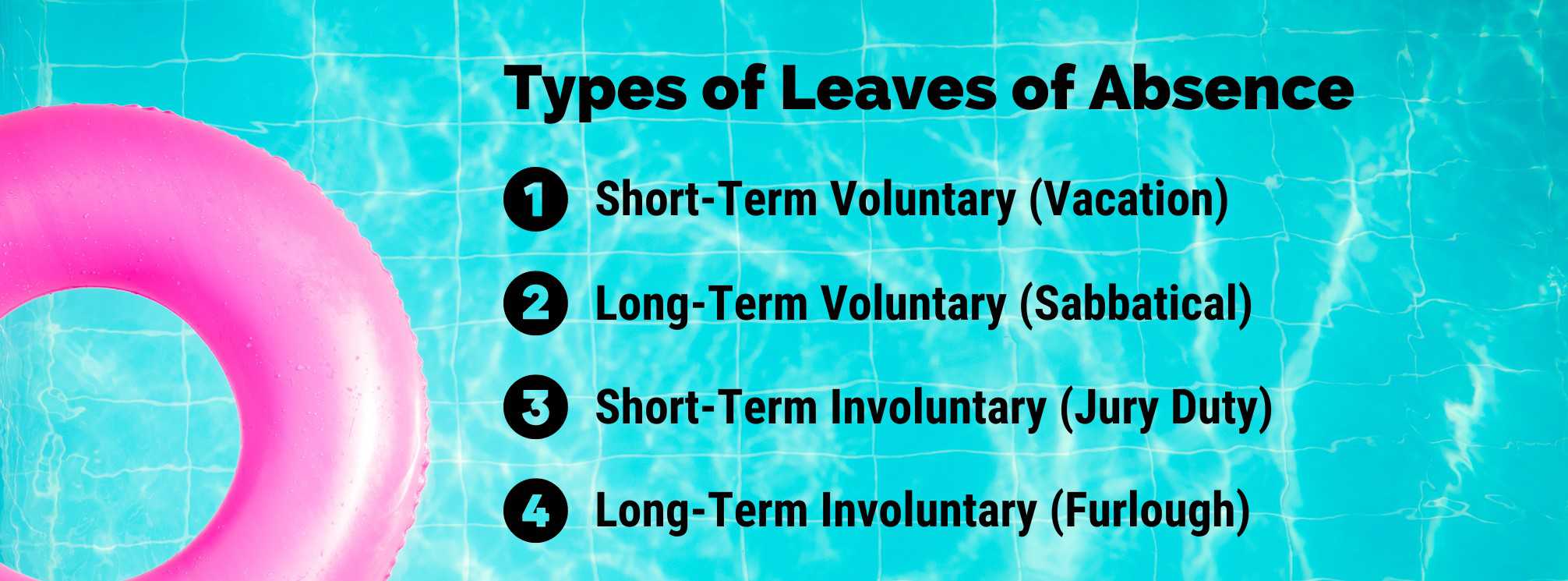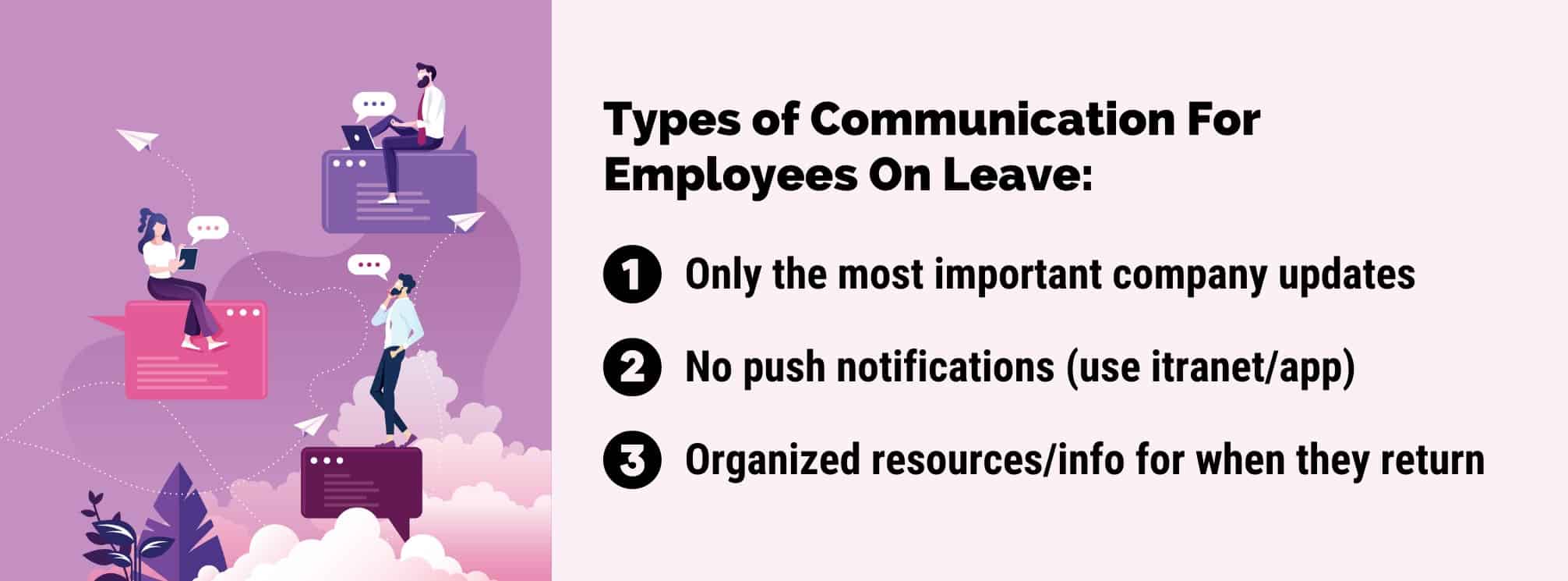
A few years ago, during the COVID-19 pandemic, we were talking all about how to engage furloughed workers so that we’d be able to bring them back to work and not miss a beat. Thankfully, employees aren’t furloughed en masse right now, but we can still talk about how companies should be communicating with employees while on leave, whether that’s voluntary or involuntary leave.
So, why should you be communicating with employees while on leave in the first place? What is there to gain?
The main reason is that these employees will eventually be coming back. And depending on the type of leave, like employees being furloughed, keeping the lines of communication open might ensure they actually do end up coming back.
Even if an employee is on voluntary leave, like maternity leave, they likely don’t want to be completely in the dark for when they return. This can help reduce stress and actually allow them to enjoy their time away. But you also don’t want to give employees work while they’re on leave or overstep. It’s a very fine balance. In the rest of this blog, we’ll talk about how to find that balance.

Before you can determine the right internal comms strategy for communicating with employees while on leave, we should talk about the various types of employee leaves of absence. And there are a lot.
The first big distinction we’ll want to make is between voluntary and involuntary leave.
A voluntary leave of absence is when the employee makes the choice to step away from work for a period of time. This could be for a vacation, for grieving, or to care for a loved one.
An involuntary leave of absence is when employees are not given a choice and are temporarily asked to step away. This includes furloughing workers, which is when employees are laid off temporarily. The hope is that these employees will return after a span of time.
The second way to distinguish between types of leave is the length of time that an employee will be away from work.
This is important because short term leave won’t require much communication. The employee won’t be away long enough to miss many important updates and catching up will be easy. It’s long term leave that might require some kind of internal communications strategy.
Short-term leave includes:
Long-term leaves of absence include:

Because there are so many situations where an employee might be on leave, it begs the question, are you allowed to contact employees who are on leave?
The short answer is that if you do reach out and contact employees who are on leave, it shouldn’t contain references to work. This is because it interferes with the employees leave, which is their legal right. Of course, there are some exceptions, like if an employee reaches out first.
But just because you can’t give the employee work or ask them about their work, doesn’t mean you can’t make information and resources available to them. The employee might want to voluntarily check in or might want a place to view what they’ve missed when they come back.
So, our big distinction is that you really want to avoid communications that you push out. You want to avoid sending them work emails or app push notifications. But they can still receive your newsletter and find resources on the app or mobile intranet.

So, if push communications are more or less off limits. And you can’t really talk about their work. What can you communicate?
This kind of information is genuinely useful for employees who are on leave. And, unfortunately, many types of leave are very personal and might be difficult for them (e.g. bereavement leave). The last thing these employees need is more stress. So, we encourage you to view your communication strategy through that lens. How can you reduce stress, not add to it?
You may even decide that you want to temporarily remove employees who are on long-term leave from their regular distribution lists and put them into a different list.
Why do that?
Say you send the whole company a weekly newsletter containing important updates, recognition, policy changes, etc. And because that’s an important document, you always send a push notification on your app and send it via email.
If you remove your long-term leave employees from that list, you can approach the communication from them differently.
[optin-monster slug=”kmjb73x66qrloywtkeil” followrules=”true”]
So, if you’re considering creating a communication strategy for workers who are on leave, keep these best practices in mind.
When communicating with workers while on leave, you have to rely on the right technology. Broadcast channels that send a notification and let messages pile up (looking at you, email) might be too invasive. Opt for channels that are more self-serve (like an app or intranet), so your employees have the choice whether or not to engage.
Employees waste so much of their time trying to find the resources and information they need. This can be frustrating, especially for employees who are catching up on weeks of work and reintegrating into their routine. So, make sure you have clear content organization so they can find the information that they missed.
Employees should feel like they are supported to take the time off they need, whether that’s short or long term leave. You can do that by reminding employees that their teams should respect their leave requests and give them a place to turn if their rights are being disrespected. But then you should also welcome them back and help them get back into the swing of things. Don’t punish employees for their time off. Make the process of welcoming them back seamless and supportive.
It’s critical to not assume you know what your employee populations need. And different employee groups and people on different types of leave might need different resources. Bottom line, let your employees guide this process. Let them tell you what kinds of resources would benefit them while they’re away, while they’re preparing for leave, and when they come back.
[optin-monster slug=”gqorn0natkqgyrtjvr6i” followrules=”true”]